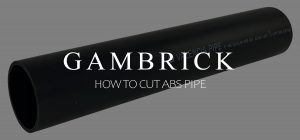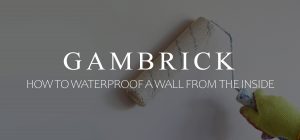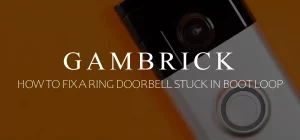How To Soundproof A Bathroom
The bathroom is one of the main rooms of the house where you want to have as much privacy as possible. As a home builder we take this into account whenever we design a new home. Bathrooms are generally located as far away from the main hubs of the home as possible to increase privacy. We would never put them next to a kitchen, dining or living room. They should be tucked away in a hall away from guests. But not everyone has this luxury. For most homeowners or renters the bathroom is in a terrible location. This is where some soundproofing can come in handy. Even though you can’t easily relocate the bathroom you can add some additional privacy with a few simple and inexpensive bathroom soundproofing techniques. In this post we’ll go over some great tip on how to soundproof a bathroom.
Reduce Bathroom Noise
When people ask how to soundproof a bathroom what they usually mean is how to block sound from getting out, not in. Blocking sound from getting out of the room is what increases a sense of privacy. No one wants to hear what’s going on in there anyway.
We’ll also discuss a few techniques which help stop outside noises from coming in. If you like to relax in the bath once in a while then these methods will help a lot.
1. How To Sound Proof A Bathroom Door
The door is probably the main area where sound can escape so it has to be addressed. Some times just installing a solid soundproof door is enough soundproofing for the entire bathroom. Interior doors aren’t built with sound resistance in mind and are typically hollow. Solid wood doors do a much better job at blocking out sound because a dense solid mass of wood repels sound waves while a hollow door allows them to pass right through.
Switching to a solid door is an easy DIY project and doesn’t cost that much. You can get a typical solid wood door for under $150 bucks. Don’t worry about changing the frame because solid and hollow doors use the same exact frames. Simply take the old door off the hinges and mount the new one. Change the hardware and your all done. Just make sure you buy the correct width to fit your frame.
Installing a solid wood soundproof bathroom door will help a lot but what about all the gaps around and under the door. A solid interior door won’t do anything about these.
Here are a few simple things you can do to soundproof the gaps around and under your bathroom door:
Fill The Side And Top Gaps With Weather Stripping
Weather stripping is great at stopping sound because it creates a tight seal around the edges of the door. This comes standard on all exterior doors but not interior ones. It’s designed to make a door weather tight which is why they don’t use it on inside doors but if you need some soundproofing this stuff works great.
Another great benefit to weather stripping is that it’s very cheap and easy to install. You can pick a roll up at Home Depot for under $10 bucks. Weather stripping comes in a variety of thicknesses but for soundproofing purposes the thicker the better. When you close the bathroom door the idea is to create a really tight seal.
It’s also super easy to install. To soundproof your bathroom door with weatherstripping follow these simple steps:
- Peel off the paper to reveal a sticky back.
- Open your bathroom door all the way or remove it from the hinges and stick weather stripping inside the door frame wherever the door meets the frame when closed.
- Make sure the weather stripping goes all the way around the frame without any gaps so the seal is complete.
- Shut the door. It should have a tight seal. You should feel the weather stripping as you close the door. The tighter the seal the better.
It’s as simple as that. Weather stripping works so well because it completely seals up any gaps between your door and the door frame. Gaps are where sound waves escape so sealing them up helps keep sound inside the room.
But what about that huge gap at the bottom of the door? Weather stripping won’t help with this.
Install A Door Sweep
The gap at the bottom of an interior door is huge so lots of sound can get out through there. Installing a solid door and sealing the gaps around the edges both work great at soundproofing the door but they don’t do a thing about the bottom gap.
Creating a soundproof door is great but if you leave a huge gap at the bottom it kind of defeats the purpose. Door sweeps are a product designed for exterior doors to prevent wind, moisture and dirt from sneaking in under doors. Their thick bristles or rubber keeps contact with the door and floor at all times which creates a tight seal when closed. Even though the seal is designed to keep out the weather it does a great job of soundproofing.
Installing a door sweep is simple and shouldn’t take more than a couple minutes. Just follow the directions that come with the sweep. They’re pretty cheap too. You can pick them up online for under $10 bucks.
What If You Can’t Afford A New Soundproof Bathroom Door?
If Installing a new solid soundproof bathroom door isn’t an option then here are a few other things you can try. Remember it’s all about adding mass to the door which repels sound. Solid doors do this automatically just by being solid wood but a hollow door can do it too with a little help.
- Screw or glue MDF, cork, vinyl or acoustic soundproof panels onto your door.
- Hang a blanket or soundproof curtain onto the door.
2. How To Soundproof Bathroom Walls
It’s easy to soundproof a bathroom if your remodeling with open stud walls or building a new home. Just install some soundproof insulation inside all your walls and seal the door. What’s hard is soundproofing a bathroom once the house is done. Generally inside walls aren’t insulated so all you’ve got is some sheet rock between you and the room next door. In most cases that’s enough. But not always. So how do you soundproof bathroom walls if the room is finished? Below we’ll go over the best soundproofing for bathroom walls.
Seal Up Any Cracks In Your Bathroom Wall
If you’ve got cracks or holes in the sheet rock then this is something you should do anyway. In most bathrooms the only soundproofing on the walls you have is the sheet rock so once it’s broken sound can pass right through. If there are any cracks or holes in your wall then seal them up. Even a small crack can let a lot of noise through.
It’s simple and cheap to do. All you need is a small bucket of spackle, tape, tray, knife and sand paper. You can pick all this up at Home Depot for around $25 bucks. They make a kit specifically for homeowners that comes with everything you need.
Once your all done finish the job with a fresh coat of paint.
Add A Second Layer Of Drywall
Mass blocks sound. As a general rule of thumb the denser a material is, the better it is at blocking sound. Adding an additional layer of sheet rock to your walls will do wonders in terms of soundproofing a bathroom. The thicker the better. A layer of 5/8″ sheet rock should be more than enough.
If your adding an additional sheet rock layer we’d recommend also installing a thin layer of acoustic vinyl in between. This will provide sound additional wall soundproofing that you won’t notice once the drywall’s been hung.
Add Some Wall Tile
Tile is a great material for soundproofing a bathroom wall. It’s a super hard material that repels sound waves and it’s generally installed over a layer of 5/8″ sheet rock or cement board which provides even more soundproofing.
Remember adding mass increases the soundproofing of whatever you add the mass to. In this case the walls.
Wainscoting Or Bathroom Wall Paneling
Wainscoting or other style bathroom wall paneling is a great way to add mass to your wall while providing some additional soundproofing. Generally wall paneling isn’t floor to ceiling so finish whatever space is left at the top with an additional layer of sheet rock and maybe even some crown molding.
All of these additional layers of material is great at providing even more soundproofing to your bathroom walls.
3. How To Soundproof A Bathroom Floor
Floors aren’t generally an issue when it comes to soundproofing a bathroom. They’re usually tiled which means sound won’t pass through easily. However impact sound, like from walking around, can pass through a bathroom floor.
If you’ve got a rare situation where someone is sleeping right under your bathroom and you want to be as quiet as possible then you’ve got a couple of options.
- Install a new flooring layer. If your remodeling the floors then add a thick layer of concrete sub floor to the plywood before you install tile. This additional layer of dense concrete will add some additional soundproofing. However if you just want to add to what you’ve got then consider a faux wood floating floor with padding. The padding will help will soften your footsteps. You can slip an additional sub layer between the tile and floating floor too for even more soundproofing.
- Add a thick rug. If your happy with your floors then all you can really do is add something plush to walk on. Get something made for bathrooms because some materials are better at getting wet than others.
4. How To Soundproof A Toilet
Listening to a loud toilet every time it flushes can be really annoying. Especially if you have to go during the night when everyone else is sleeping. The seat knocking against the tank or bowl can be really loud too. Luckily there are a few options that can help reduce bathroom noise coming from that noisy toilet.
Add Some Padding To The Seat
If you don’t have a toilet lid cover then get one. The lid cover will help reduce that annoying knock you hear whenever the lid hits the tank. You may not notice it when using the toilet during the day but late at night when everything’s silent a little knock from the lid will sound like a loud bang.
You should also stick some bumpers to the bottom of the seat so you won’t hear a loud whack if the toilet seat falls. I’ve had this issue myself in the past. The sound of a toilet seat falling onto the bowl can sound like you hit it with a hammer in the middle of the night.
Doing these two small things should completely eliminate the loud annoying banging a toilet seat can make.
Soundproof Toilet Flush
If your toilet has a really loud flush then you may want to think about replacing the toilet. Some older toilet designs flushed really loud because of how the tank is built and how much water they used. Newer tanks are more compact and use a lot less water which reduces the amount of noise each flush makes.
If you don’t want to replace the toilet then sealing it up better will help. Just as with the door, creating a tighter seal around the tank will help muffle the sound each time you flush.
To do this all you’ll need is some adhesive foam tape. To soundproof your toilet tank follow these simple steps:
- Take the lid off the tank and clean the top and inside edges. Tape sticks best to a clean and dry surface.
- Peel the paper backing off the adhesive foam and stick it around the top edges of your toilet tank. Fold some inside the wall of the toilet too if it’ll help. Every toilet tank is a little different.
- Push the tank lid firmly back into place. It should feel like a tighter, more secure fit. Like a tight seal. The tighter the seal the better.
- Flush the toilet with the seat and cover down.
Creating a tight seal isn’t going to completely eliminate the sound of a flushing toilet but it’ll help a little.
Check The Toilet Plumbing
If your toilet makes a lot of noise when filling up between flushes you may have an issue with your plumbing.
Check that the water intake and all internal parts are secured correctly.
Check to make sure that the water valve is set correctly. Valves can make a lot of noise if they’re not set correctly so tighten or loosen up the valve as the toilet tank is filling to see if it makes a difference.
This is an issue more prevalent with older model toilets than newer ones.
5. Bathroom Fans
Ventilation is very important in a bathroom so buying the right fan is a must. Fans are rated by how much noise they make and how much air they cycle per minute. Make sure you buy a unit that’s of good quality. The better fans are generally quieter than the cheap ones. They last a lot longer too and often times come with a light built in.
Buy the right size fan for the size of your bathroom. If you buy a big fan which is meant for a large master bathroom it’ll sound too loud in a small room. Buy one that’s meant for a small bathroom if that’s what you’ve got. The motor will be smaller which makes less noise.
6. How To Reduce Echo In A Bathroom
How to reduce echo in a bathroom is the same as you reduce it in any other room of the house. By filling it with stuff. Walk into any empty house or room and you’ll hear a bad echo. Once all the house stuffs been brought in though it goes away. This is because sound waves interact with all the stuff they hit. Some creates a bounce while others absorb. It’s the absorbing that you really want.
Try adding softer, natural materials to the bathroom like a thick rug and curtains. A waste or laundry basket is a great addition and so is a towel rack with some plush towels. Soft materials are great at absorbing sound waves because they don’t bounce off them which is what creates the echo. If all you’ve got are hard bathroom surfaces like tile and marble then your going to have some echo.
Conclusion
Does soundproofing a bathroom work? How do you soundproof a bathroom? These are two common questions we get asked all the time. The answer is yes and hopefully the methods we’ve gone over in this post will help you with the how.
By following these simple steps you’ll be able to turn your bathroom into a private place you and your guests will feel a little bit more comfortable in. Will it be 100% soundproof? No, but the difference will be significant. Most of these things can be done in a weekend, are affordable and really do help.
If your ever building a new home or remodeling an older one try to implement some soundproofing techniques into your design from the start. There are a ton of soundproofing options available to you during construction that are really effective.
If you have any questions or comments e-mail us any time. We’d love to hear from you.





















